Comprehensive Guide to Cleaning Wash Basin Drains
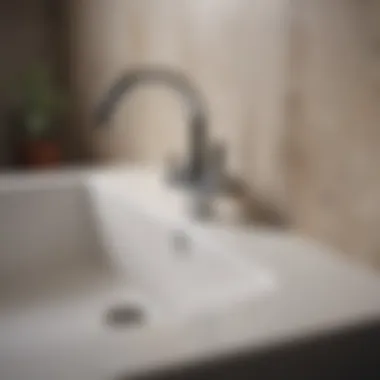
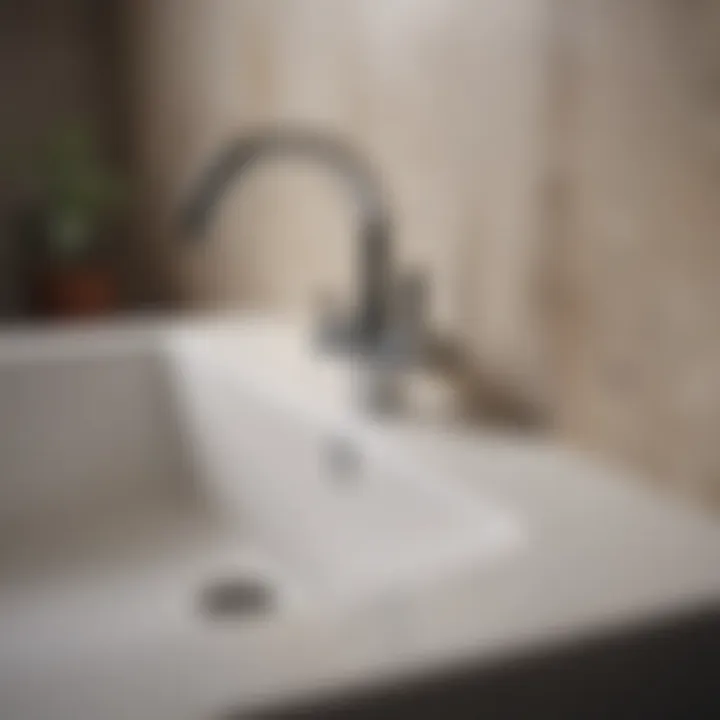
Intro
Cleaning wash basin drains is often overlooked in household maintenance. However, understanding how to effectively clean and care for these drains is essential for maintaining hygiene and preventing other plumbing issues. Clogged drains can lead to unpleasant odors, slow drainage, and more severe plumbing problems if left unattended. This article seeks to illuminate the techniques and tools necessary for proper drain care, while also discussing the common causes of clogs that homeowners should be mindful of.
By mastering regular cleaning habits and recognizing early signs of trouble, one can vastly improve the performance and longevity of wash basin drains. The goal here is not just to provide a temporary fix but to empower homeowners with the knowledge needed for ongoing drain maintenance.
Now, let us explore the best practices and methods for cleaning wash basin drains.
Understanding Wash Basin Drains
Understanding wash basin drains is crucial to maintaining effective plumbing systems within homes. These drains serve as conduits for wastewater and play a significant role in hygiene and convenience. Over time, neglect and lack of regular maintenance can lead to numerous problems such as clogs, unpleasant odors, and unsightly backups. Thus, grasping the complexities of wash basin drains can empower homeowners to take proactive measures in care and upkeep.
Types of Wash Basin Drains
Pop-up drains
Pop-up drains feature a mechanism that allows them to be closed or opened with a simple push. This type's key characteristic is its ease of use. The pop-up function prevents water from flowing away when filling the basin, promoting optimal usage during tasks like washing hands or dishes.
One unique feature of pop-up drains is the stopper, which can collect debris effectively. However, they require regular attention as the mechanism may become stuck or clogged with soap scum and hair, complicating maintenance efforts.
Flat drains
Flat drains are designed to sit flush with the wash basin surface. This minimalist characteristic makes them a popular choice for modern designs, offering an aesthetic appeal that aligns with contemporary bathrooms and kitchens.
These drains allow for easy cleaning, as there are few crevices for debris to accumulate. However, they can be less effective in large volumes of water. Homeowners should consider their water usage and drainage needs when opting for flat drains.
Grid drains
Grid drains consist of an open grille or series of holes that allow water to flow while filtering out larger debris. The prominent characteristic here is the capability of managing significant water flow, making them suitable for busy bathrooms or commercial spaces.
Grid drains often require less intensive cleaning due to their structure, preventing clogs more effectively than other types. A potential downside is that smaller particles may still pass through, leading to buildup in plumbing systems if not monitored accurately.
Importance of Regular Maintenance
Preventing clogs
Preventing clogs is an essential aspect of maintaining effective wash basin drains. Regular maintenance routines can significantly reduce the risk of severe blockages, which can lead to costly repairs and water damage.
By regularly cleaning drains and removing debris, homeowners can keep the water flowing smoothly. Ignoring clogs can escalate, resulting in more significant issues that are harder to rectify and might require professional intervention.
Extending lifespan
Another vital point is extending the lifespan of plumbing systems. Regular maintenance helps keep the drains functioning optimally, preventing wear and tear that leads to replacements. Well-maintained drains operate efficiently and can last many years when cared for properly.
Homeowners should consider this long-term perspective when developing a cleaning schedule. Investing time in routine checks increases the lifespan of plumbing and reduces replacement costs over time.
Enhancing hygiene
Enhancing hygiene is critical in wash basin drains. Stagnant water and organic material buildup can create a breeding ground for bacteria and foul odors. Frequent cleaning and maintenance prevent such problems, ensuring that the space remains sanitary and pleasant.
By prioritizing hygiene through regular drain maintenance, homeowners can avoid potential health hazards that come with unclean plumbing systems. Routine inspections and prompt action against potential issues are essential in sustaining a clean and safe household environment.
In summary, understanding and maintaining wash basin drains is integral for a healthy home. Regular attention safeguards against clogs, extends service life, and enhances overall hygiene.
Thus, grasping the importance of these elements encourages proactive management and fosters a more pleasant living experience.
Common Causes of Clogged Drains
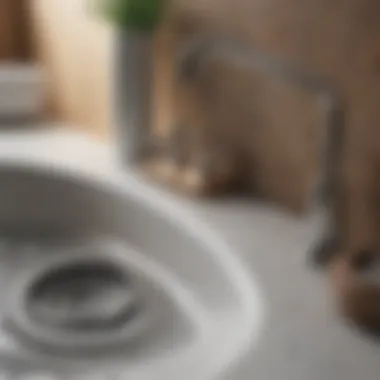
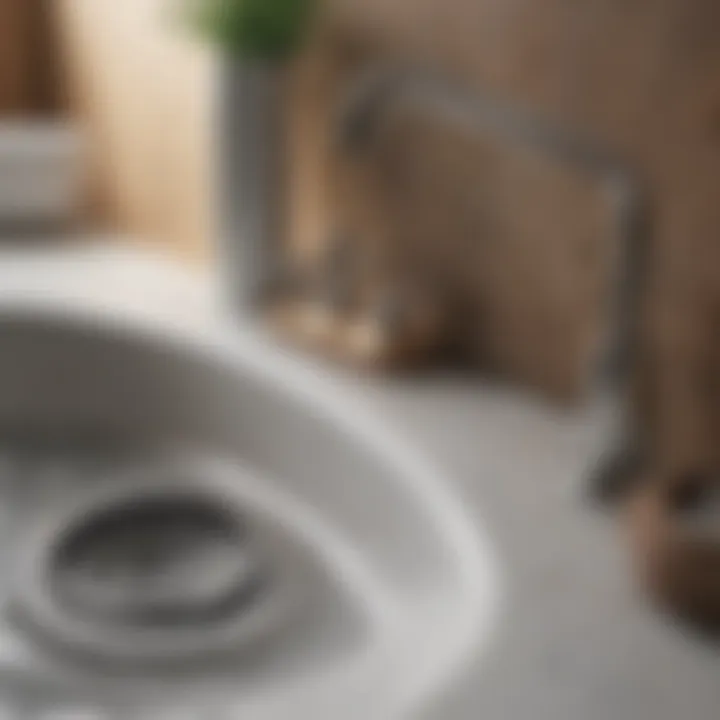
Understanding the common causes of clogged drains is crucial for effectively managing and maintaining wash basin functionality. Clogs can lead to unpleasant odors, water backups, or even serious plumbing issues if left unattended. By recognizing these issues early, homeowners can implement preventive measures and minimize costly repairs.
The sources of clogs often involve everyday activities and items that accumulate in the drains. This article will delve into the specific elements that can cause blockages, ultimately supporting effective maintenance strategies and prolonging the lifespan of plumbing systems.
Accumulation of Hair and Soap Scum
One of the leading contributors to clogged drains is the combination of hair and soap scum. Hair tends to trap soap residues, forming a thick sludge that can easily impede water flow. This has the potential to create a significant blockage over time, leading to slow drainage or complete obstructions.
- Preventing Hair Accumulation: Simple measures can reduce this problem, such as using hair catchers in the basin. These devices can capture hair before it enters the drain, significantly reducing the risk of clogs.
- Cleaning Frequency: Regular cleaning of the basin, at least once a week, helps remove soap scum buildup. A mixture of vinegar and baking soda can be an effective solution to dissolve lingering soap residues. By addressing this combination early, you can maintain a clear, functional wash basin.
Food Particles and Debris
Though food debris is more commonly associated with kitchen sinks, it can also be a factor in wash basin drains, especially in areas where sinks are used for washing dishes or cleanup. Even small food particles can accumulate and combine with grease or soap, leading to clogs. The presence of debris not only obstructs drainage but also contributes to unpleasant odors.
- Proper Disposal Methods: To mitigate this issue, always dispose of food scraps properly and avoid rinsing leftover food down the sink. Consider using a separate disposal container for any debris generated while cleaning.
- Periodical Drain Maintenance: Flushing the drain with hot water periodically can help in breaking down and clearing food particles that might settle at the bottom.
Mineral Deposits and Hard Water Issues
Another common culprit for clogged drains is the buildup of mineral deposits, particularly in areas with hard water. Over time, minerals such as calcium and magnesium can accumulate in pipes, leading to a narrowing of the drain passage. This situation often exacerbates existing clogs and can eventually result in total blockage.
- Identifying Hard Water: If your area has hard water, you may notice white deposits or scaling around faucets and drains. Investing in a water softener can significantly reduce these issues.
- Descaling Solutions: Regular use of descaling solutions or natural remedies like vinegar can help clear out mineral buildup and improve water flow. This proactive approach can save time and money in the long run by preventing severe clogs from occurring.
"Understanding the root causes of drain clogs is essential for effective prevention and maintenance."
In summary, awareness of these common causes—hair and soap scum, food particles and debris, as well as hard water issues—can empower homeowners to take action and maintain their wash basin drains. Implementing simple preventive strategies will not only improve drainage but also enhance hygiene and convenience.
Required Tools for Cleaning Drains
Cleaning wash basin drains effectively requires the right tools. Using appropriate tools makes the process quicker and more efficient. They help address various issues that may arise during cleaning. Selecting the right equipment is essential in maintaining hygiene and ensuring a suitable drain condition. The following sections detail basic cleaning supplies, chemical agents, and safety gear essential for drain maintenance.
Basic Cleaning Supplies
Plunger
A plunger is a fundamental tool in any home maintenance kit. It serves the primary function of dislodging blockages within the drain. The key characteristic of a plunger is its simple design, consisting of a rubber suction cup attached to a wooden handle. This tool is popular due to its ease of use. Its unique feature is the ability to create suction and pressure, which can effectively remove minor clogs. While plungers are often effective, they may not work well on severe blockages. Moreover, proper technique is important to avoid damaging the pipes.
Drain Snake
The drain snake is another important tool for cleaning. It consists of a long, flexible metal or plastic wire designed to reach deep into the pipes. The key characteristic of a drain snake is its ability to remove stubborn clogs that are inaccessible with a plunger. Its flexible design allows it to navigate bends in the pipes. Drain snakes are a beneficial option when you encounter persistent obstructions. However, they require careful handling to avoid scratching the pipes or getting stuck.
Bucket
A bucket is an often-overlooked yet crucial tool in drain cleaning. Its primary function is to hold water or debris while cleaning the drain. The key characteristic of a bucket is its capacity to hold significant volumes of fluid. A bucket is useful due to its versatility and ability to carry waste away from the sink area. In this context, it aids in maintaining cleanliness during the cleaning process. One disadvantage may be its bulkiness, which can make it cumbersome in tight spaces.
Chemical Cleaning Agents
Store-bought Drain Cleaners
Store-bought drain cleaners provide a convenient solution for tough clogs. These products often contain strong chemicals designed to dissolve grease and other materials. Their key characteristic is the speed of action, allowing users to see results within minutes. They can be a popular choice for those who prefer a quick fix rather than manual cleaning. Yet, these cleaners can be harsh, posing risks to both plumbing and health. Hence, it is crucial to follow manufacturer instructions closely.
Homemade Solutions
Homemade solutions offer a more natural alternative to commercial products. These mixtures are typically made from common household items like baking soda and vinegar. The key characteristic of homemade solutions lies in their eco-friendliness. They can effectively break down minor clogs and prevent odors. Furthermore, homemade options are often cheaper and safer. However, they might not work as effectively on severe blockages, requiring patience and repeated applications.
Safety Gear
Gloves
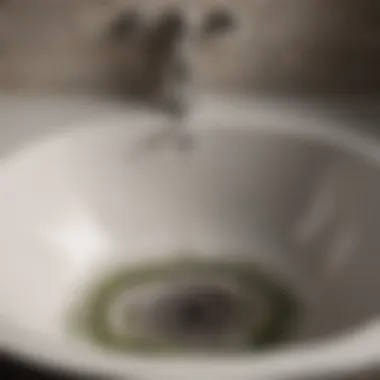
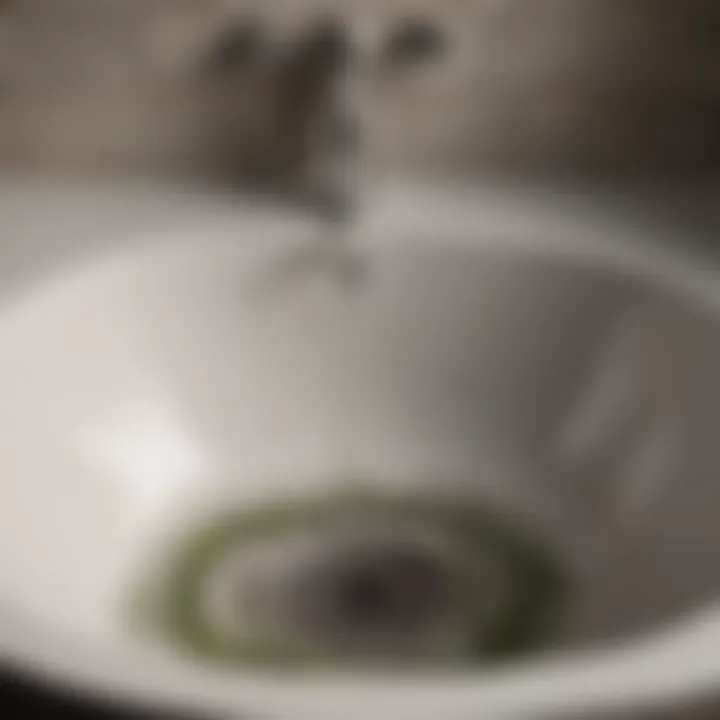
Gloves are an essential part of the safety protocol for drain cleaning. Their primary function is to protect the skin from chemicals and debris. The key characteristic of quality gloves is their durability and chemical resistance. Wearing gloves prevents skin irritation and allows homeowners to handle tough clogs safely. A disadvantage might be the reduced dexterity they provide, making some delicate tasks more challenging.
Goggles
Goggles provide additional eye protection during the cleaning process. The main concern during cleaning is the potential splashes from chemicals or debris. The key characteristic of goggles is their ability to shield the eyes effectively from harmful substances. Using goggles is a wise choice to prevent any accidents. They are beneficial, particularly when using chemical cleaners. On the downside, they may cause discomfort if worn for extended periods.
Remember to always prioritize safety and proper technique when cleaning drains to ensure effective outcomes.
Step-by-Step Guide to Cleaning Wash Basin Drains
Cleaning wash basin drains is an essential process that homeowners must understand. Though it may not seem like a priority, neglecting regular maintenance can lead to significant plumbing issues and hygiene concerns. This section will outline the importance of effective cleaning methods, detailing specific elements such as preparation, manual processes, and chemical cleaning. Following these steps contributes to a cleaner home and extends the life of your plumbing.
Preparation and Safety Measures
Before starting the actual cleaning process, preparing oneself and the environment plays a crucial role. Safety measures are paramount. First, ensure that you have the necessary tools at hand, as this will streamline the cleaning process.
Wearing safety gear such as gloves and goggles is a fundamental precaution. Gloves protect your hands from chemicals or sharp objects found in drains, while goggles shield your eyes from any splashes.
Next, clear the area around the wash basin. Having ample space can prevent accidents and allows for easier access.
Manual Cleaning Process
Removing visible debris
Removing visible debris is a straightforward yet effective step in cleaning drains. This practice involves taking out any hair, soap scum, or other material that could impede flow. The process allows you to assess how clogged the drain is.
One key characteristic of this step is its immediate impact. When debris is removed, you often see an instant improvement in water drainage. This makes it a highly beneficial choice for a quick fix.
However, there are disadvantages to solely relying on debris removal. It doesn't address the deeper clogs that could form further down the line. Thus, while effective, this step should always be followed by more thorough cleaning methods.
Using tools effectively
Using tools effectively enhances the cleaning process significantly. Tools such as a plunger or drain snake can tackle clogs that are not visible. Utilizing these tools allows you to reach areas that are otherwise inaccessible, directly targeting the source of a blockage.
The key feature of using tools is their capability to dislodge stubborn clogs. This makes it a popular choice for any thorough cleaning regimen. It is crucial to understand how to utilize each tool appropriately, as improper use can lead to pipe damage.
The main disadvantage here is that tools need to be used correctly. Misuse can complicate the issue at hand instead of helping it. Therefore, familiarity with each tool is vital.
Applying Chemical Cleaners
Follow manufacturer instructions
Following manufacturer instructions is critical when applying chemical cleaners. Each product has specific guidelines that ensure safe and effective use. This step not only maximizes the product's effectiveness but also minimizes risks associated with chemical use.
One key characteristic of adhering to these instructions is the importance placed on safety. It helps prevent mishaps that could arise from incorrect proportions or methods.
However, different products might vary greatly in terms of efficacy and environmental impact. This is why careful examination of the instructions and ingredients is essential.
Proper disposal of waste
Proper disposal of waste includes responsibly discarding any used chemical cleaners or debris. This step is essential for environmental protection and public safety. Improper disposal can lead to contamination of water sources and other ecological concerns.
One advantage of adhering to proper disposal methods is the peace of mind it provides. Knowing you are disposing of harmful substances safely is a significant responsibility.
The obstacle, however, lies in ensuring that all members of the household are aware of these disposal methods. Education on proper waste management practices should not be overlooked.
Post-Cleaning Maintenance
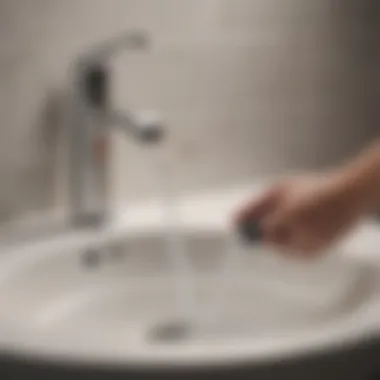
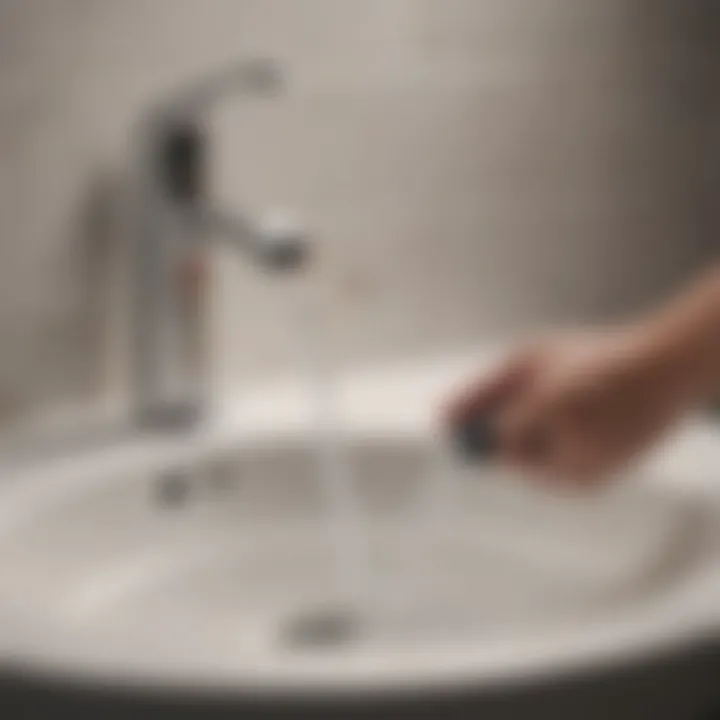
Once the cleaning process is completed, post-cleaning maintenance becomes crucial. This phase ensures that the wash basin drains continue to operate effectively and prevent future issues such as clogging. Regular maintenance can enhance hygiene and prolong the lifespan of your plumbing. It serves a practical purpose but also provides peace of mind knowing systems are in good working order. Moreover, maintaining drains helps avoid costly repairs caused by neglect.
Regular Cleaning Schedule
Setting a regular cleaning schedule is an effective strategy in maintaining wash basin drains. It enables homeowners to stay ahead of potential problems.
Weekly inspections
Weekly inspections involve checking for any signs of buildup or clogs. This can include observing whether water flows freely in the basin. The regularity of these inspections contributes to the early detection of issues. Many find this practice beneficial since it takes little time and can effectively prevent larger problems before they develop. A key characteristic of this approach is its simplicity. It does not usually require special equipment or cleaning agents. However, it does demand consistency and attentiveness from the homeowner. While the advantages of weekly inspection are evident, it requires a commitment to engage in this practice routinely.
Monthly deep cleaning
In addition to weekly inspections, performing a monthly deep cleaning is essential. This process goes beyond quick checks and involves a thorough cleaning of the drains. Homeowners might utilize specialized cleaning agents or tools to ensure every inch of the basin's drainage system is clear. This method offers a more comprehensive overview of the drain’s condition and is often seen as a strong proactive measure. Monthly deep cleaning can help identify and remove any stubborn build-up that weekly inspections might miss. The unique feature of this technique is its ability to significantly reduce the likelihood of serious clogs developing over time. However, this method can require more time and effort compared to weekly inspections, which may deter some homeowners.
Preventative Measures
Taking preventative measures can further safeguard wash basin drains against future clogs and maintenance issues.
Use of drain covers
Using drain covers is a straightforward yet effective method to prevent debris from entering drains. These covers catch hair and particles before they can accumulate in the pipes. A key characteristic of drain covers is their accessibility and simplicity; they are easy to install and available in various designs. Employing drain covers is often a popular choice among homeowners due to their low cost and low maintenance requirements. The unique feature lies in their ability to act as a first line of defense against clogs, providing an additional layer of protection without much inconvenience. Though effective, it is essential to clean the covers regularly, as neglecting them can lead to backups.
Education on proper usage
Education on proper usage of the wash basin is vital for preventing clogs. This involves informing all household members about what can and cannot be put down the drain. For instance, items like grease, food scraps, and non-biodegradable substances should be avoided. The main characteristic here is awareness, which can lead to better habits over time. This approach is beneficial because it empowers users and can decrease reliance on professional services for simple problems. The unique feature of this strategy is that it fosters a culture of responsibility within the household. Still, it requires continuous effort to maintain awareness among all users.
Troubleshooting Persistent Clogs
Troubleshooting persistent clogs is essential for maintaining the functionality of wash basin drains. Even after regular cleaning and maintenance, clogs can reoccur. Understanding how to identify and address these issues can save homeowners significant time, effort, and expenses. This section focuses on critical factors that contribute to such clogs and provides insights on how to resolve them effectively.
Identifying Underlying Issues
Inspecting pipes
Inspecting pipes is one of the first steps in diagnosing a persistent clog. This process involves assessing for blockages and structural integrity issues. Most clogs arise from a combination of materials that can restrict water flow. By examining pipes closely, you can identify if there are any visible signs of damage or obstruction. A notable advantage of inspecting pipes is that it allows homeowners to spot small issues before they develop into larger ones.
A key characteristic of this method is its directness. By looking at the pipes, one can often glean information that indicates whether a clog is due to accumulated debris or if it is the result of a more serious problem, such as corrosion. Inspecting pipes may require some specific skills and tools, depending on the configuration of the plumbing in your home.
However, the major drawback is that many homeowners may not have the expertise or equipment to carry out a thorough inspection, which can lead to misdiagnoses and further complications to the plumbing system.
Checking for tree roots
Checking for tree roots is another component of identifying underlying issues that can affect drain performance. Tree roots can infiltrate sewer lines, causing significant blockages over time. This problem is especially common in older properties or in areas with many trees.
The primary advantage of checking for this issue is that it addresses a potential source of persistent clogs that may be overlooked. If tree roots are the cause, homeowners must act quickly to mitigate the damage. One approach includes professional root removal services which will ensure your plumbing is clear.
A unique aspect of checking for tree roots is the need for specialized equipment, like sewer cameras, to accurately assess the situation. The ability of a plumber to see inside the drain without excavation is incredibly beneficial, but it also introduces costs that some homeowners may find significant. Therefore, budgeting for these potential expenses is crucial.
When to Contact a Professional
If you've tried to clear a clog using household methods with no success, it's time to consider contacting a professional. Professionals have the training and tools to address complex plumbing problems effectively. They can provide a thorough inspection and determine if persistent clogs are caused by issues deeper within your plumbing system, ensuring a more effective and lasting solution.
Closure
In concluding our exploration of cleaning wash basin drains, it is essential to acknowledge the multifaceted benefits of regular drain maintenance. A clean drain is not only functional but also crucial for hygiene and comfort in any home setting. Ignoring the health of your wash basin drain can lead to persistent clogs, unpleasant odors, and even more significant plumbing issues down the road.
Summary of Key Points
- Importance of Regular Maintenance: Routine cleaning averts clogs, extends the longevity of your plumbing, and promotes better hygiene in your home. By being proactive, homeowners can prevent situations that necessitate costly repairs and unpleasant surprises.
- Common Causes of Clogs: Understanding what typically leads to blockages allows homeowners to take preventative measures. Hair and soap scum can accumulate quickly in wash basins, often combined with mineral deposits from hard water, leading to compounded issues.
- Effective Cleaning Techniques: Utilizing the appropriate tools—like brass plungers or nylon drain snakes—complements the effectiveness of chemical agents, whether store-bought or homemade. Prioritizing safety during the process reinforces the importance of using gloves and goggles.
Final Recommendations
- Establish a Regular Cleaning Routine: Create a schedule that includes weekly inspections and monthly deep cleaning sessions to keep drains in optimal condition. Consider integrating the use of drain covers to minimize debris entry.
- Educate Family Members: Communicate the significance of proper use of drains to everyone in the household. This simple step can vastly reduce the amount of debris and food particles entering the plumbing system.
- Seek Professional Help When Necessary: If persistent clogs arise despite regular maintenance, it may be time to contact plumbing professionals. They can identify underlying challenges that go beyond typical maintenance solutions.
Remember, your wash basin is a vital part of your home. Keeping it clean not only enhances its functionality but also contributes to the overall health of your living space.















